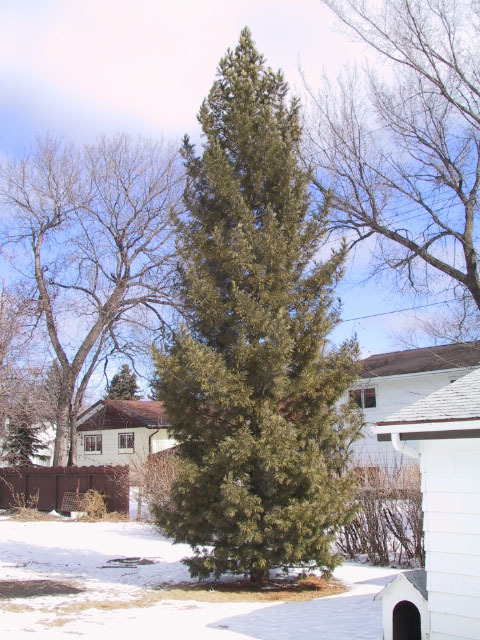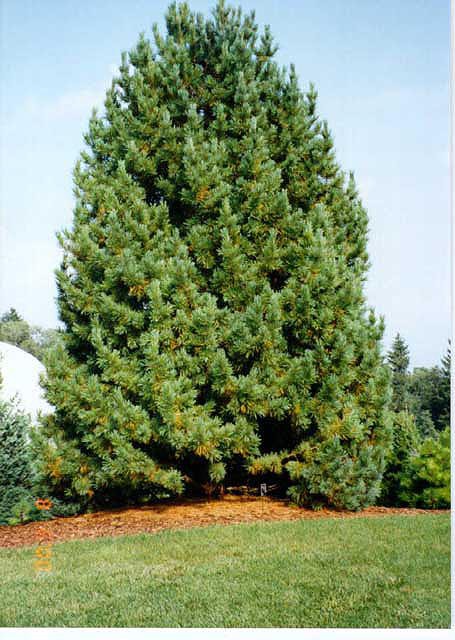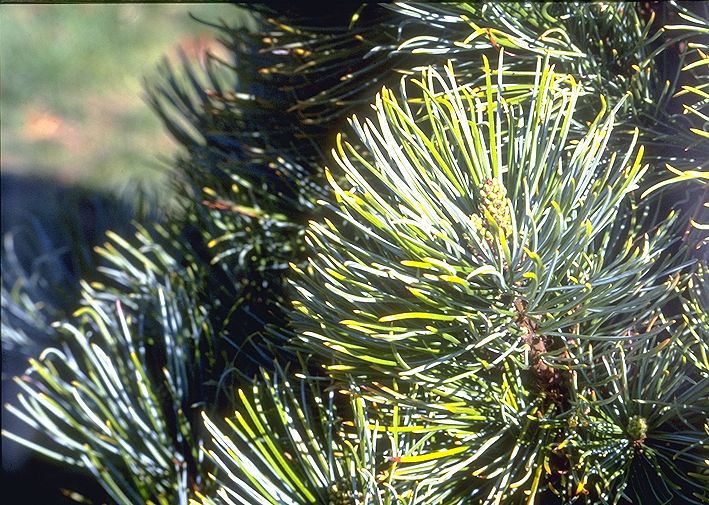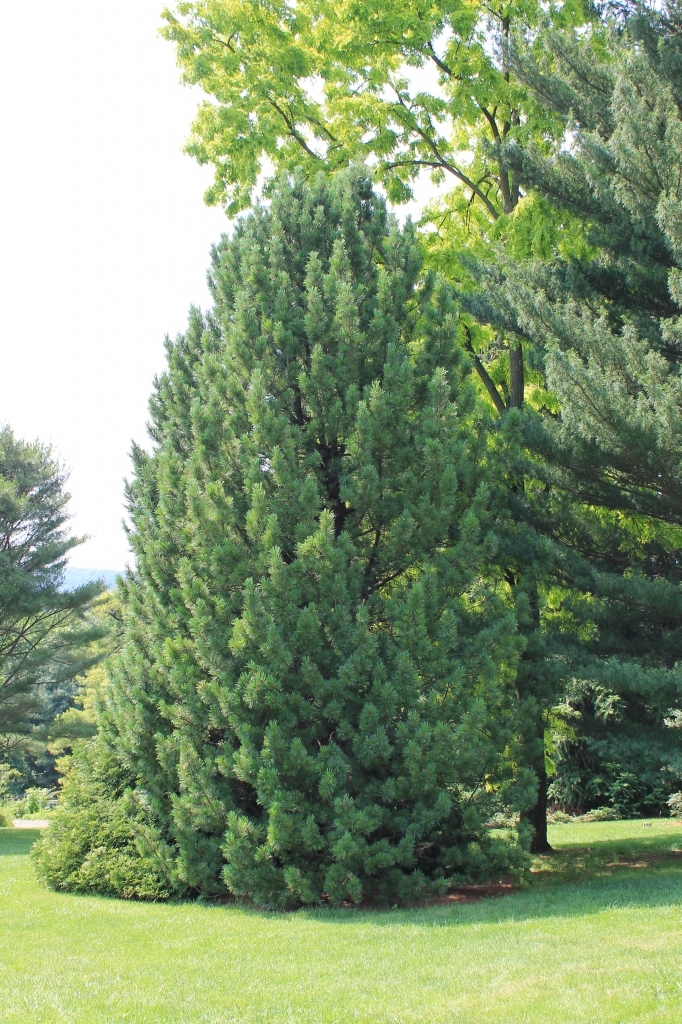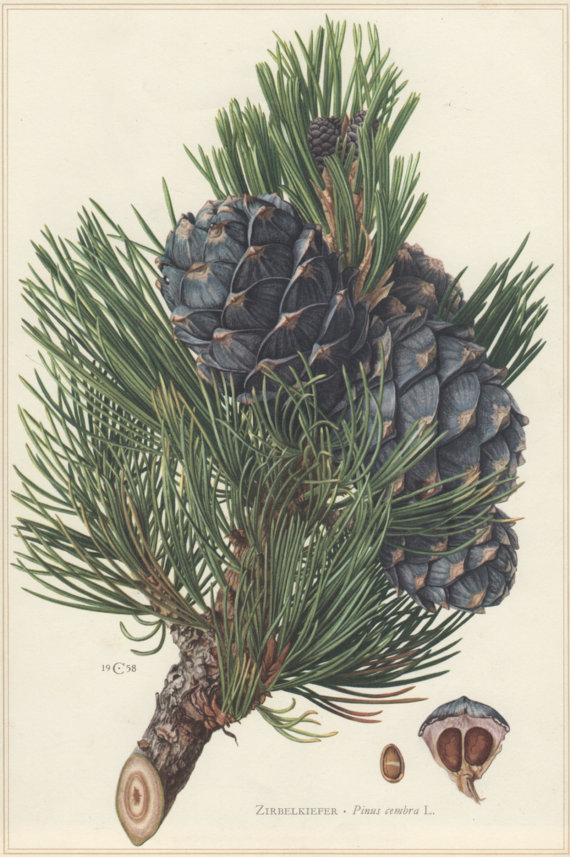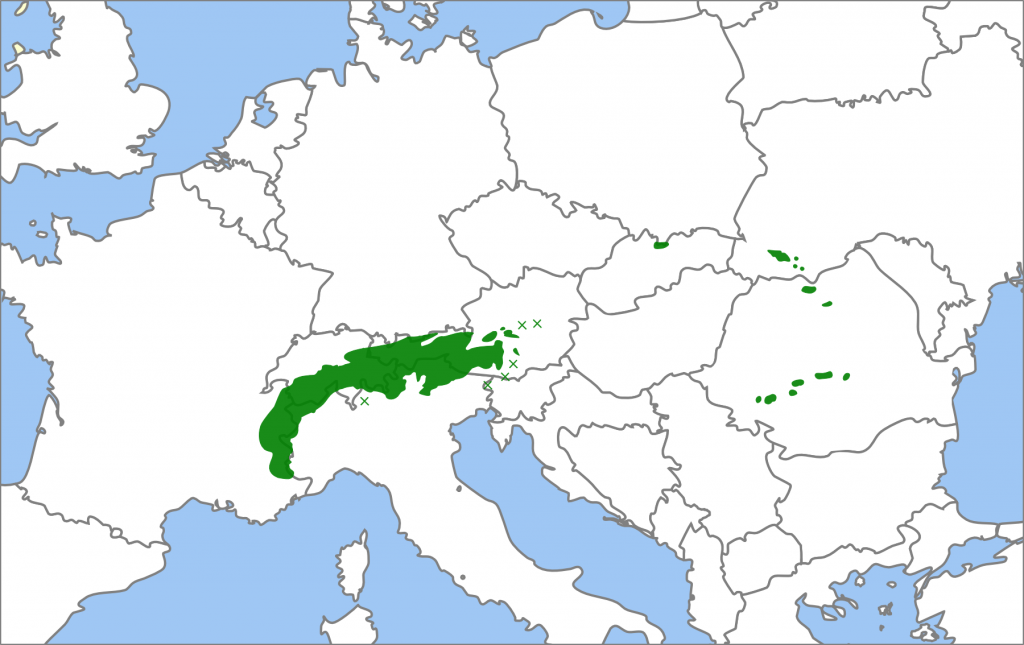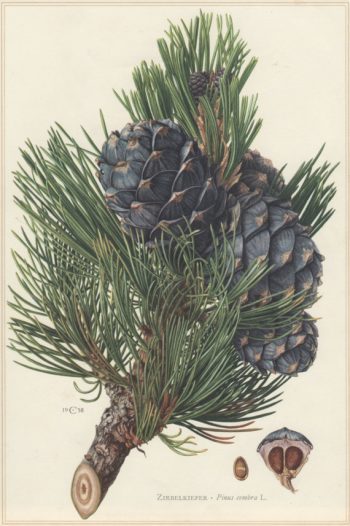
Pinus cembra, first described in 1753 by Carolus Linnaeus (1707-1778), is commonly known as Arolla pine, Swiss, or Swiss Stone pine; as well as pin cembro in the French language; and Zirbelkiefer in German. The species name refers to its edible and nutritious seeds.
Ethnobotany. This pine is loved by both humans and wildlife for its seeds, which are easily extracted from the cone, highly nutritious, and very tasty. Pine cones cut into slices are used to flavor Schnapps, which is then sold as "Zirbenschnaps" or "Zirbeler" Schnapps.
Beds and furniture made of the very aromatic smelling Pinus cembra wood are very popular within the Alpine region of Europe. A scientific study of Joanneum Research in 2003 has shown that exposure to a Swiss Stone Pine may improve sleep by saving you up to 3,500 heart beats per night making nights more restful and restorative. The aromatic Pinus cembra wood is said to be antibacterial as well. Some studies also indicate that beds made of Swiss Stone Pine may tend to reduce meteorsensitivity..
Description. Arolla pine is a coniferous species of tree that grows to mature heights of 80 feet (25 m) tall with a trunk up to 60 inches (150 cm) in diameter, measured at breast height. The tree's crown is narrowly pyramidal in youth, developing an open, flattened crown with age. At timberline, when exposed to tortuous weather, may form krummholz.
The very similar species P. sibirica differs in having leaves with 3, rather than 2 resin canals, and slightly larger cones.
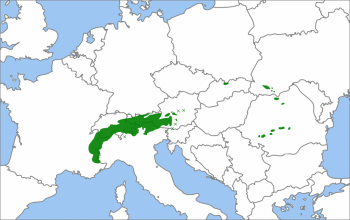
Distribution. This species is native to Europe - Austria, Czech Republic, France, Germany, Italy, Poland, Romania, Switzerland, and Ukraine. Grows only in the subalpine zone, at elevations of 3,500 to 7,500 feet (1,200 - 2,300 m) above sea level in the Alps and portions of the Carpathian Mountains, forming mixed and pure stands. "Owing to its slow growth, P. cembra is a weak competitor compared with other trees. However, it is better adapted to the harsh upper subalpine climate conditions than any other European tree species. Consequently, it can compete in mixed stands where the performance of the other subalpine trees (mainly Picea abies and Larix decidua) is reduced and establish pure stands above their growth limit." It is also commonly found with Pinus mugo.
Hardy to USDA Zone 1 - cold hardiness limit below -50°F (-45.6°C), which makes it one of the most cold-hardy trees known.
